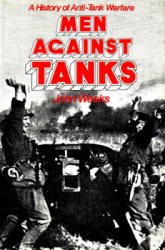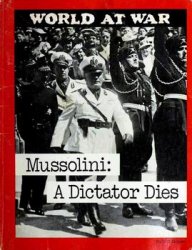Cultivating a Sense of Place
Physical features alone, like large settlement size and high population density, cannoT fully deine the urban nature of a city. As Marco Polo tells the Chinese emperor, "The city does not consist of this [spatial materiality], but of relationships between the measurement of its space and the events of its past" (Calvino 1974:10) and those past events are inscribed in every material aspect of the city. Early deinitions of urbanism (Childe 1950; Simmel 2002 [1903]; Weber 1958; Wirth 1938) stressed the social experience of living in a city. Recent considerations of urbanism continue to place importance on how human action and human relations play integral roles in
Constituting cities. For example, in discussing the "spatial specificity of urbanism," Soja (2000:5) considers not just the configuration of the built environment, but also the social relations and the human activities that take place within it. The proximity caused by dense settlement creates an increase in social interactions between urban dwellers. As a result, interdependencies among social groups and individuals are formed, which in turn affect the spatialization of social life (Bourdieu 1977; Joyce 2001; Joyce and Hendon 2000). Thus, the materiality oF the built environment is simultaneously the means, medium, and outcome of social reproduction (Soja 1989). The interdependencies about which Soja writes make cities the center of large social networks. Experience of and involvement in these networks can cause residents, as well as the hinterland inhabitants, to identify with cities (e. g., Yaeger 2003). Cities are "places - that is, specific locations in space that provide an anchor and a meaning to who we are" (Orum and Chen 2003:1). This sense of placeness and identity is realized through everyday interactions of people with the materiality of the urban setting (Bourdieu 1977; Joyce and Hendon 2000; Yaeger and Canuto 2000; see also Fisher, Chapter 6 in this volume).
A. MAGNONI,
T. ARDREN,
S. R. HUTSON, AND B. DAHLIN
In sum, cities are not just buildings and demography, but also a set of shared experiences that cultivate a sense of place with which people come to identify. In this section of the paper, we claim that a unique sense of place did indeed develop at Chunchucmil, differentiating it from other Maya cities. People did things differently at Chunchucmil and, to be expected of anthropologists, we attempt to pinpoint the factors that made Chunchucmil different. The basic notion that people come to identify with cities appears in widely circulated readers about urban anthropology (e. g., Rotenberg 2002). Yet even a whiff of the word "identity" may occasion discontent among those with materialist leanings. Without doubt, the concept of identity, like all broad concepts, is imprecise. For example, Brubaker and Cooper (2000) argue that identity has come to mean too many things - philosophical notions of permanence, psychoanalytic notions of the self, sociological notions of roles, subaltern notions of race, class, gender, and more. At the same time, Brubaker and Cooper recognize that even if the term identity has become too ambiguous and encumbered, the work it has been tasked with - charting how people's histories, predicaments, commonalities, and self-understandings inform the claims they make and the way they live - remains important and valid. The florescence of archaeology books on the
Subject of identity (e. g., Casella and Fowler 2005; Dtaz-Andreu et al. 2005; Insoll 2007) suggest that the relevance of identity will not soon abate. In the interests of semantic hygiene, we limit our use of the word identity to refer to the shared bonds that result from the process of establishing similarities anD differences (Jenkins 2004:5).
Space and
IDENTITY at
Chunchucmil
Experiencing the Materiality of the Built Environment
Two aspects oF Chunchucmil's built environment make it quite different from other Maya centers: houselot boundary walls and quadrangles. We have already discussed both of these at length and will only add short comments about them before attempting to explain how these features came to be shared. With regard to stone boundary walls, whatever practical function they served (for example, clarifying claims to space in a dense context where space was at a premium) cannot fully explain why so many people chose to build them. This is because the people of Chunchucmil built these walls not just where occupation was dense and space was scarce, but also at the edge of the site where space was abundant and walls would no longer be needed for communicating claims to space or creating privacy. Quadrangles and domestic groups at Chunchucmil share the same basic layout. Quadrangles, which have a tall pyramid on the east side and range structures facing the patio on the other three sides, repeat on a larger scale the layout of domestic groups: residential structures arranged around a patio with a domestic shrine on the east side. Although this plan is a common architectural arrangement for small domestic groups at other Maya sites, it is very rare as a template for monumental architecture at other Maya sites. It is unusual to find that nearly all of Chunchucmil's large architectural compounds take a form so rarely found in monumental compounds beyond Chunchucmil. Also, in large residential groups at Chunchucmil with tall eastern shrines, a small central platform (similar to that found in quadrangles) is often present, indicating a continuity of architectural form and meaning (Figure 5.5). The elite architectural complexes at Chunchucmil seem to have grown from the bottom-up emulation of the common disposition of Maya domestic architecture arranged around a patio and wIth a shrine on the eastern side, albeit at a larger scale (Ardren et al. 2003; Magnoni 2008).
What can explain these two distinguishing features of Chunchucmil's built environment? In other words, why did nearly
All households use boundary walls and why did nearly all massive building projects take the form of quadrangles? Unlike other sites that have massive plazas for ceremonies that may have integrated their populaces, Chunchucmil lacked any spaces large enough to accommodate more than a fraction of the people living at the site (see Inomata 2006). In fact, Chunchucmil is better known for ceremonial spaces in domestic contexts. Of particular relevance here are the domestic shrines located on the east side oF the domestic patios, where residents would have participated in common rituals and ceremonies (Figure 5.5). At least 34 percent and possibly as many as two-thirds of residential groups at Chunchucmil showed an eastern domestic shrine (Magnoni et al. 2012). Eastern domestic shrines were commonly found at other Maya sites (Becker 1991, 1999, 2003; Leventhal 1983; Tourtellot 1983), but they were not present in such abundance at all sites. For instance, aT Tikal where the eastern shrines have been extensively studied, only 14 percent of residential groups had a domestic shrine (Becker 1999). The large quantity of eastern shrines at Chunchucmil is particularly significant given the absence of large public religious buildings and plazas for the practice of worship at an urban level. Instead, worship took place within the walls of the residential groups or in the quadrangles, the largest of which could not hold even a tenth of the site's maximum estimated population.
A. MAGNONI,
T. ARDREN,
S. R. HUTSON, AND B. DAHLIN
These rituals wouLd have helped reinforce social bonds among residential groups or larger groups that shared an affiliation with a particular quadrangle, buT they would not have created a city-wide identity. Each of the four excavated domestic shrines had unique architectural aspects that set them apart from their neighbors and reinforced a distinctive household identity (Ardren and Lowry 2011; Hutson et al. 2004, Magnoni et al. 2012). These domestic shrines with continuous architectural remodeling and the presence of ancestor burials and dedicatory offerings with inalienable goods would have been places for negotiating household power relations and expressing social coherence and identity (see Nishimura, Chapter 3 in this volume, for a discussion of household tombs underneath house floors in northern Mesopotamia). These shrines wouLd have also been important in creating and maintaining the household's social memory by permanently inscribing these sacred places in the domestic landscape (Connerton 1989). Detailed excavations in these shrines have revealed the reaccession of the sealed deposits, indicating that the knowledge of the location of such deposits - together with their
Histories and memories - were passed down from generation to generation and formed part of the social memory of the household (Hutson 2010; Magnoni 2008).
SPACE AND IDENTITY AT CHUNCHUCMIL
Participating in Long-Distance Trade and Commerce
Thus, the shared bonds implied by similarities found across Chunchucmil - boundary walls and quadrangles - could not have been created by site-wide ceremonies because Chunchucmil lacked a venue for such large ceremonies. If participation in ceremonies did create a sense of unity at Chunchucmil, such unity was fostered at much smaller scales in residences and quadrangles. We argue that understanding how people at Chunchucmil came to share bonds requires looking at other practices and the relations engendered by those practices. A critical practice at Chunchucmil was participaTion in long-distance trade and market exchange. Participation in long-distance trade and the presence of a marketplace where local residents and visiting traders could have exchanged their goods is corroborated by the widespread distribution of obsidian in households at Chunchucmil. The large majority (97 percent) of the obsidian at Chunchucmil comes from El Chayal, located 670 km away in highland Guatemala. Our excavations in 162 locations across the site representing each type of architectural and residential group has shown an abundant and equal distribution of obsidian prismatic blades across all households independent of size and socioeconomic status (Hutson and Dahlin 2008; Hutson et al. 2010). Such an egalitarian distribution of obsidian blades would not have been possible under economies based on redistribution or reciprocity; only market exchange could have distributed so widely an exotic material like obsidian (Hirth 1998; Masson and Freidel 2012). Configurational data support the presence of a marketplace at Chunchucmil. Dahlin (2003; Dahlin et al. 2007) interpreted a flat, leveled 1 ha area bounded by the three major sacbes in the site center as a marketplace (Figure 5.4). Excavations exposed several short rock alignments - the remains of makeshift market stalls - accompanied by unusually high phosphate values, which accumulated as the result of intense wastage and spillage of organic items. Moreover, the battered condition of small sherds and tiny fragments of obsidian, which were recovered close to the market stalls, would be consistent with continuous trampling and sweeping.
The presence of similar amounts of obsidian at large quadrangles and small residential groups indicated that everybody in Chunchucmil, independent of their social status, had access to this long-distance traded material through market exchange. The abundance of obsidian prismatic blades across large and small households alike shows that socioeconomic hierarchical relations may have been mItigated by heterarchical ones (Hutson and Magnoni 2011). In fact, Hutson et al. (2010) suggested that supra-household collectives based in the quadrangles, but in collaboration with other households, may have managed the obsidian trade and redistribution because the scale of the undertaking would have been too sig-nihcant for individual households. This level of supra-household cooperation, which would have crossed social hierarchies, would have reinforced a common identity built around the experiences of long-distance trade and market exchange. In aDdition, it would have been in the best interest of the collectives to reduce competition and increase cooperation in order to foster optimal conditions for long-distance trade and a flourishing market economy (Hutson et al. 2010).
A. MAGNONI,
T. ARDREN,
S. R. HUTSON, AND B. DAHLIN
As discussed in greater length in Hutson et al. 2008, hamlets in the rural hinterland belonging to Greater Chunchucmil showed six times the amount of obsidian found in settlements outside of the 5-km radius of Greater Chunchucmil. Even though the amount of obsidian present at the rural hamlets within Greater Chunchucmil was only a third of the amount present in urban Chunchucmil, it indicated participation in the Chunchucmil economy. Given that inhabitants of the rural hinterland of Greater Chunchucmil participated in Chunchucmil's obsidian market, it may come as no surprise that these rural inhabitants also used stone boundary walls to demarcate their residential groups. In this hinterland portion of Chunchucmil, consisting of hamlets with low-settlement density, boundary walls would not have been needed for practical purposes of deining space or maintaining privacy. Rural inhabitants chose to mark their connection with the city in an effort to emulate the urban life and be part oF Chunchucmil's "imagined community" (Anderson 1991; see also Isbell 2000; Knapp 2003; Yaeger 2000). Were these rural house lots with boundary walls the product of urban household is-sioning as households in the city grew in size through time? If so, these would have been urban dwellers moving to the hinterland and taking with them their own internalized way of experiencing
And recreating the material settings. Or were these rural inhabitants newcomers to the area trying to create a sense of place and identity by emulating the urban lifeways? Unfortunately, our data cannot provide us answers with respect to the origins of these rural dwellers, but it is clear that in Greater Chunchucmil, the production of a spatial materiality aT the residential level that attempted to replicate the urban form was a statement of affiliation and participation in the urban identity (Hutson et al. 2008).
Space and
IDENTITY at
Chunchucmil
Reinforcing Social Bonds
Another componenT that reinforced the social bonds that resulted in shared ways of doing things at Chunchucmil was the lack of spatial segregation between residential groups of different sizes and economic levels. No neighborhoods with a concentration of large and wealthy households (measured in terms of volume of architecture and yard size) were found at Chunchucmil; instead, small domestic units were often placed next to large ones, whereby they shared a common wall or a street (Figures 5.3 And 5.5). In addition, our detailed mapping and testpitting program at 162 locations across the site and detailed excavations at six groups have failed to identify neighborhoods inhabited by different ethnic groups, or specific craftsmen. Even though we cannot detect archaeologically distinctive neighborhoods at Chunchucmil, we suspect that intermediate social units of interaction between the household and the city would have been present at the level of the neighborhood, particularly in a city as dense as Chunchucmil. Although we cannot identify a spatial concentration of archaeological markers of ethnic groups or the clustering of specific occupations or crafts at Chunchucmil, we suspect that spatial segments of the city bounded by streets may have been neighborhoods - localized spatial units created from the bottom-up where residents would have had face-to-face social interactions and shared use of space (Feinman and Nicholas 2012; Smith and Novic 2012). The low boundary walls (never higher than 1-1.5 m); the low, winding chichbes (which may have supported tall plants); anD the narrow streets, on average 2 m wide, provided frequent opportunities for neighbors of different socioeconomic levels to interact with each other and form extra-household relations. Whether walking down the narrow streets or being able to see and relate to neighbors over the low boundary walls in the crowded urban landscape,
Chunchucmil citizens were never isolated from their neighbors and passersby walking down the streets. The spatial materiality of the urban environment - the lack of segregation of domestic units based on wealth in conjunction with the shared fences and narrow alleyways interspersed in the dense settlement - favored continued social interactions among households, which would have contributed enormously to the strengthening of social bonds (Hutson and Magnoni 2011; Magnoni et al. 2012). In turn, the built environment that Chunchucmil residents left for us to study was the outcome of social negotiations and collaborations among neighbors. Levels of supra-household coordination and cooperation, at least at the neighborhood level, are visible in the irregular, yet functional, layout of boundary walls and streets allowing traffic across the city, which would not have required a centralized planning effort (Dahlin and Ardren 2002; Hutson et al. 2008). This adaptive strategy of self-organization at the neighborhood level - "the introversion of the intermediate units" (Blanton and Fargher 2012:42) - is the result of multiple self-governing neighborhoods providing public goods when these are not offered by the state. These stone boundary walls were erected around living spaces by individual households, but in coordination with neighbors, to place boundaries in the appropriate places and leave enough space for narrow streets (see Creekmore, Chapter 2 in this volume, for examples of supra-household, but decentralized planning, in Upper Mesopotamian cities oF the third millennium).
A. MAGNONI,
T. ARDREN,
S. R. HUTSON, AND B. DAHLIN
The layout of the central portion of the city - the lack of impressive focal monumental architecture anD the arrangement of quadrangles interspersed with residential groups within the central portion of the site - suggests a lack of centralized planning. We believe that this architectural configuration is indicative of the lack of hierarchical and centralized ruling authority that would have supervised civic administration oF the city. Only six quadrangles and the four main connecting sacbes in the site center seem to have been spatially organized following a "coordinated arrangement of buildings and space" (Smith 2007:8) (Figure 5.4). In addition, the spontaneous and organic growth of tightly bound residential groups and winding streets, generated by individual household practices, also indicates a lack of centralized civic planning of residential areas. Another important distinction in Chunchucmil's settlement pattern is the use of sacbes. At sites throughout the Maya region, these straight and broad processional avenues are considered the product of organized labor
From a centralized authority, as they connected large monumental groups symbolizing the alliances and relations between elite groups (Kurjack and Andrews 1976; Shaw 2001). Chunchucmil's central sacbes (15-25 m-wide processional causeways that extended for 130-300 m) were no different as they connected several of the central quadrangles, but ten aDditional sacbes, which were narrower (maximum width of 6 m), radiated out of the site center (up to 800 m away) and intersected with the street network (Figures 5.4 And 5.5). Whereas a centralized authority may have created these narrow and, in some cases, curving sacbes to allow easy access to the central part of the site, city dwellers built boundary walls against these sacbes to protect the privacy of their residential groups and created intersections of the streets with the sacbes to facilitate traffic (Figure 5.5). In this process, Chunchucmil residents were appropriating the urban features, possibly imposed by a centralized authority, and producing a different urban landscape that would it their needs (cf. Fisher, Chapter 6 in this volume, for a discussion of similar processes in Cyprus). Thus, even though the central sacbes may have been used for public, ceremonial processions and events as in other Maya sites, the long and narrow sacbes leading away from the site center and intersecting with the connective tissues of the urban layout - streets and boundary walls - may have carried more mundane traffic of local residents, as well as traders and visitors coming and going on a day-to-day basis.
SPACE AND IDENTITY AT CHUNCHUCMIL
By dwelling at Chunchucmil, its citizens were no longer simply part of kin-based social networks, but participated in extra-household social networks such as cooperative associations based on commerce and neighborhood maintenance. This increase in the network of contacts through participation in groups outside the households in turn created a high level of economic and social interdependence between a variety of groups from the city, its hinterland, and the trading partners (Ardren et al. 2003; Feinman and Nicholas 2012; Smith 2003). In this recursive process of spatialization and social production, we have to acknowledge the practices of individual social actors, even though it can be hard to isolate specific people in the archaeological record (e. g., Cowgill 2004; Smith 2003).
Cities are loci for socially generative practices: partaking in political or civic performances and administrative occurrences, or simply daily trading activities, would have provided the opportunity for interactions with a wide range of urban dwellers, as well as visiting
Traders. In these circumstances, social relations were built across the resident and visiting population spectrum regardless of social distinctions. This continuous interaction would have facilitated the creation of a shared identity that united them as the residents of this city, beyond the level of the household identity (Hutson et al. 2008, Magnoni et al. 2012). This mutual understanding of similarities was shaped by their common experiences of sharing an urban landscape charged with the architectural identifiers of hierarchy, such as the quadrangles and sacbes, anD densely populated by similar social units based in the bounded house lots with which they interacted in supra-household groups (Magnoni 2008). This shared urban identity generated by supra-household interactions may have, on some occasions, stood in contrast to - and on other occasions, complemented - the specific social identities created at the household level, which have been extensively documented by our intensive research in specific residential groups (Hutson 2010; Hutson et al. 2004; Magnoni 2008; Magnoni et al. 2012).
A. MAGNONI,
T. ARDREN,
S. R. HUTSON, AND B. DAHLIN
To better understanD the notion of urban identity, we now turn to the concept of the "urban imaginary" (Ardren, et al. 2003; LiPuma and Koelble 2005). The urban imaginary can be conceptualized as a "culturally imaginary space" that is created and continuously transformed on one side by the overlapping circulations of people, goods, ideas, and ways of life, and on the other side by the stabilizing practices of the city's administrative powers and its infrastructure (LiPuma and Koelble 2005:154). The urban imaginary is constructed and transformed by the social experience of dwelling in the city and even its hinterland, in part by the constant interactions with the materiality of the city (the crowded residential groups, the narrow streets, the tall pyramids oF the quadrangles) and in part by the continuous intersections of individual and collective ways of being and experiencing the city (the circulation of stories, shared experiences, and social identities at the household or supra-house-hold level). Chunchucmil residents, like those inhabiting other cities, may have perceived their social existence through the "urban imaginary," or the "enabling socio-semiotic matrix within which those that inhabit the city imagine and act as urban-making collective agents" (LiPuma and Koelble 2005:155). The daily circulations of
Local and exotic goods, residents and foreigners, stories, experiences, and ideas through Chunchucmil's built environment led to specific understandings and production of the identity of "being from there." We acknowledge that despite the presence of many factors favoring the creation of a shared urban identity, multifarious ways of internalizing, experiencing, and expressing this urban identity must have been present at Chunchucmil and its hinterland as the result of individuaL idiosyncrasies and histories.




 World History
World History









